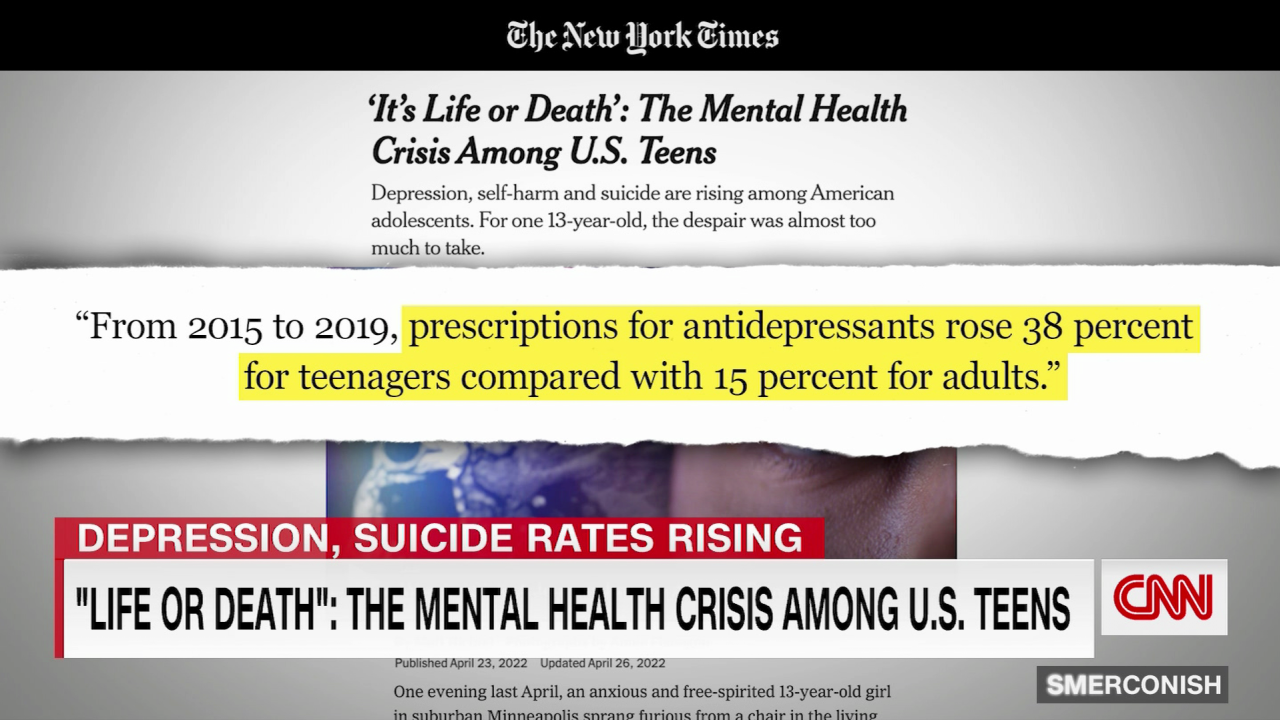Poor mental health among teens in the United States was a concern before the Covid-19 pandemic, and major disruptions to school and social life since early 2020 have only exacerbated the situation.
A new study from the US Centers for Disease Control and Prevention found that most adolescents experienced negative events during the Covid-19 pandemic – and those experiences were linked to higher prevalence of poor mental health and suicide attempts.
Nearly three-quarters of high school students in the US reported experiencing at least one adverse childhood experience in 2021, such as physical abuse, emotional abuse, food insecurity or loss of a parent’s job during the Covid-19 pandemic. Also included were electronic bullying, dating violence and sexual violence.
Adolescents experiencing one or two adverse events were more than twice as likely to report poor mental health and nearly six times more likely to report a recent suicide attempt compared with those who did not experience any adverse events.
And the effects are compounding. About 1 of every 13 adolescents (8%) reported experiencing four or more adverse events during the Covid-19 pandemic. For these students, poor mental health was four times as common and suicide attempts were 25 times more common than for those who did not experience any adverse events.
“The Covid-19 pandemic exposed the extent and severity of the mental health crisis on racial and ethnic minority, sexual and gender minority, and marginalized young people,” US Surgeon General Dr. Vivek Murthy wrote in a recent public health report. “Experiences of trauma and marginalization, among other factors, can place these young people at heightened risk for mental health difficulties later in life, too.”
The new CDC study was based on responses from more than 4,000 high school students to the 2021 Adolescent Behaviors and Experiences Survey. It does not capture all factors affecting adolescent mental health or suicidal behaviors and does not assess lifetime exposure to the specific adverse childhood events included.
But another CDC study published this year found that there were significant increases in high school students reporting persistent feelings of sadness or hopelessness, considering suicide or attempting suicide over the past decade – and they got even worse during the pandemic.
“Youth are in crisis,” Kathleen Ethier, director of the CDC’s Division of Adolescent and School Health, said in March.
“This data and others like it show us that young people and their families have been under incredible levels of stress during the pandemic. Our data exposes cracks and uncovers an important layer of insight into the extreme disruptions that some youth have encountered during the pandemic.”
Overall, emotional abuse had the strongest association with poor mental health and suicide attempts, according to the new CDC data.
“For more than a decade, suicide has been the second or third leading cause of death among adolescents aged 14-18 years,” the researchers wrote. “This analysis highlights the ongoing, urgent need to address adversity experienced before and during the pandemic to mitigate its impact on mental and behavioral health.”
Strategies include stronger economic support for families and connecting both youth and parents to community- and school-based resources, they said.
“As devastating as these statistics are, the real tragedy is that we were failing to adequately respond to them,” Murthy wrote.
“We must collectively come together to ensure that young people, particularly those who are marginalized, understand that struggling with their mental health does not mean that they are broken or that they did something wrong. We must actively engage young people and their families in conversations on mental health and reinforce that mental health challenges are real, common, and treatable.”
Get CNN Health's weekly newsletter
- Sign up here to get The Results Are In with Dr. Sanjay Gupta every Friday from the CNN Health team.
Through the American Rescue Plan, the Biden administration has invested $5 billion in mental health and substance use programs through the US Department of Health and Human Services, with billions more proposed in future budgets.
One significant shift came this summer, with the transition of the National Suicide Prevention Lifeline to a three-digit dialing code: 988. Early data suggests success, with calls jumping 45% in the first month compared with the same time a year before.
Tim Jansen, chief executive officer of Community Crisis Services Inc., which manages a 988 call center in Maryland, said that most of the increased volume he’s seen has been in chat and text messages.
“With younger people, that’s how they reach out,” he said.
Approaching the mental health of teens and youth is nuanced and should be different from the way adults are treated, he said. But most important, it’s critical to underscore that these crises can affect anyone.
“Awareness is huge,” Jansen said.





